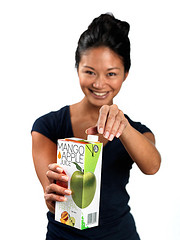 My fiancee and I are having a green wedding. That means that we’re making conscious choices about the environmental impacts of every wedding-related decision we make, including what we provide to our guests. We decided not to provide soft drinks, but rather to provide a selection of healthier, organic juices. We went to the grocery store and found ourselves in a classic environmental dilemma, much like the ketchup bottle situation that Rick Smith found himself in when writing Slow Death by Rubber Duck. On one side, we found Santa Cruz Organic juices, a product of California and packaged in a glass bottle. On the other hand, we found Kiju Organic juices, a local Ontario product, packaged in a Tetra Pak container. Both products were the same price for roughly the same volume of juice, so there was no financial aspect to the decision. A glass bottle is more sustainable than a Tetra Pak, but a local product means it didn’t travel as far – if only there was a local product in a glass bottle! But alas, this is the classic environmental dilemma – more often than not, when trying to be environmentally responsible, you are faced not with an ideal choice, but with having to choose the lesser of two evils.
My fiancee and I are having a green wedding. That means that we’re making conscious choices about the environmental impacts of every wedding-related decision we make, including what we provide to our guests. We decided not to provide soft drinks, but rather to provide a selection of healthier, organic juices. We went to the grocery store and found ourselves in a classic environmental dilemma, much like the ketchup bottle situation that Rick Smith found himself in when writing Slow Death by Rubber Duck. On one side, we found Santa Cruz Organic juices, a product of California and packaged in a glass bottle. On the other hand, we found Kiju Organic juices, a local Ontario product, packaged in a Tetra Pak container. Both products were the same price for roughly the same volume of juice, so there was no financial aspect to the decision. A glass bottle is more sustainable than a Tetra Pak, but a local product means it didn’t travel as far – if only there was a local product in a glass bottle! But alas, this is the classic environmental dilemma – more often than not, when trying to be environmentally responsible, you are faced not with an ideal choice, but with having to choose the lesser of two evils.
Tetra Pak – The Environmental Dilemma
2
